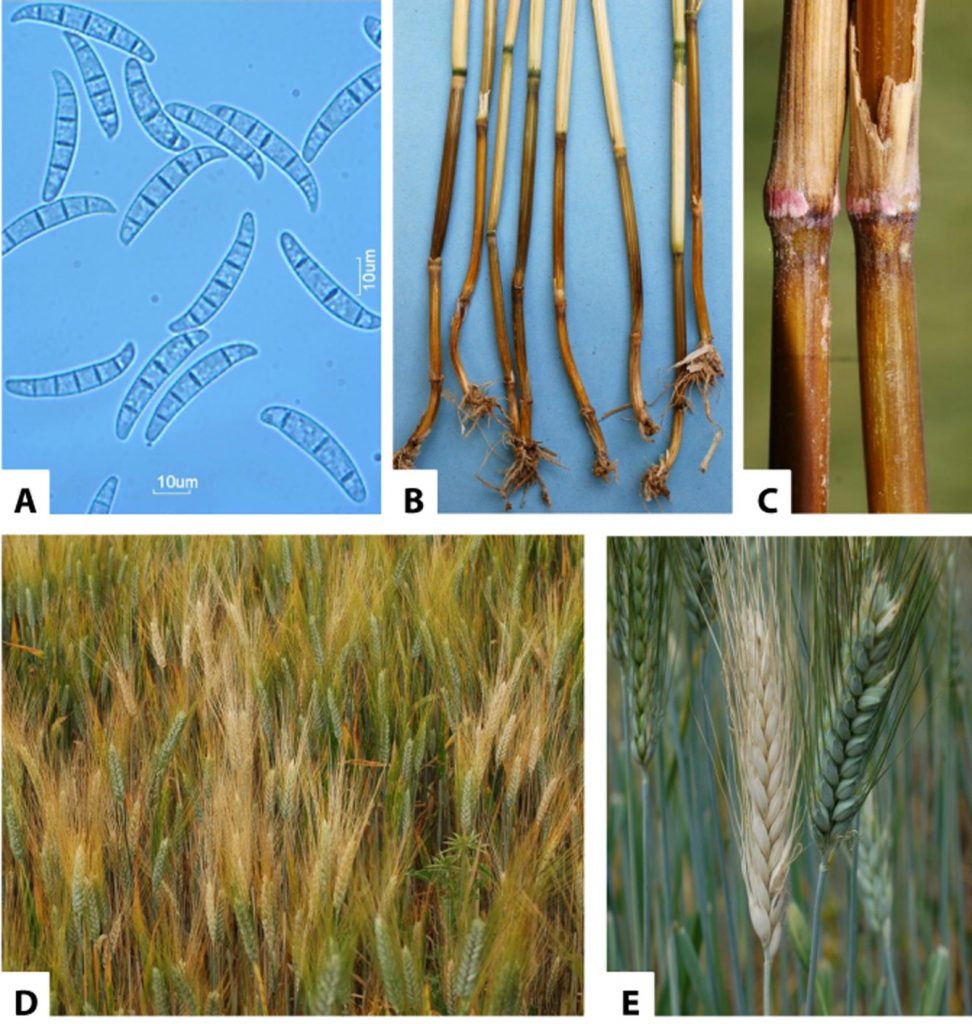
Introduction
Fusarium Head Blight (FHB), caused primarily by Fusarium graminearum, is one of the most devastating wheat diseases globally. It not only reduces wheat yield but also affects grain quality through contamination with mycotoxins, particularly deoxynivalenol (DON), leading to severe economic consequences. This article explores the economic impact of FHB from both macroeconomic and microeconomic perspectives, highlighting both major and minor effects on the economy.
Macroeconomic Impacts of Fusarium Head Blight
1. Global and National Wheat Supply Reduction
FHB outbreaks cause significant reductions in wheat production, leading to supply shortages. Countries that rely heavily on wheat exports, such as the United States, Canada, and Ukraine, experience reduced competitiveness in global markets due to quality degradation. When large-scale losses occur, wheat prices may increase, impacting global food security.
2. Market Disruptions and Trade Restrictions
Many countries impose strict regulations on mycotoxin levels in imported wheat. Contaminated wheat often fails to meet these standards, leading to trade rejections and financial losses. For instance, European Union regulations on DON levels have resulted in rejected shipments from North America, affecting the international wheat trade.
3. Impact on Food and Feed Industries
The presence of mycotoxins in wheat disrupts the food and feed industries. Contaminated wheat cannot be used for human consumption and is often diverted to animal feed at significantly reduced prices. However, even in animal feed, high toxin levels can pose health risks, leading to further economic consequences for livestock industries.
4. Increased Costs for Research and Policy Implementation
Governments and agricultural research institutions allocate substantial resources to developing FHB-resistant wheat varieties and improving fungicide effectiveness. Additionally, stringent monitoring and testing regulations increase administrative costs, which are often passed on to farmers and consumers.
Microeconomic Impacts for Wheat Production
1. Direct Financial Losses to Farmers
FHB results in yield loss due to damaged wheat heads and poor grain filling. Additionally, infected grains often have lower test weights, reducing their market value. Farmers not only face reduced income but also incur additional costs for fungicide applications and other management practices.
2. Increased Production Costs
Farmers must invest in disease-resistant seed varieties, fungicides, and advanced agronomic practices to mitigate FHB. The additional input costs significantly increase the cost of wheat production, potentially reducing profit margins, particularly for small-scale farmers.
3. Quality Discounts and Rejections
Grain elevators and mills impose strict quality controls on wheat, leading to price discounts for FHB-infected grains. In severe cases, entire shipments may be rejected, forcing farmers to sell at lower prices or discard their harvest altogether.
4. Storage and Processing Issues
Post-harvest management becomes critical for minimizing mycotoxin contamination. Farmers and grain handlers must invest in better storage facilities and testing procedures, adding to operational expenses. Flour mills must also conduct rigorous testing to ensure compliance with food safety regulations, increasing production costs.
5. Indirect Effects on Rural Economies
Since wheat farming is a major economic activity in many rural areas, severe FHB outbreaks can lead to reduced incomes, affecting local businesses and employment opportunities. Reduced profitability may force some farmers to shift to alternative crops, altering the local agricultural economy.
Minor but Significant Economic Impacts
1. Increased Insurance Claims
Crop insurance providers face higher claim rates during severe FHB outbreaks, leading to financial strain on insurance systems. Premiums for farmers may rise in subsequent years, increasing the overall cost of farming.
2. Shift in Consumer Behavior
As wheat prices fluctuate due to FHB-related shortages, consumers may switch to alternative grains, affecting demand patterns in the food industry. This can have long-term impacts on market stability and pricing strategies.
3. Reputation Damage for Wheat-Producing Regions
Regions that frequently experience FHB outbreaks may develop a negative reputation for producing low-quality wheat, affecting long-term trade relationships and market trust.
Conclusion
Fusarium Head Blight poses a significant economic threat to the wheat industry at both macro and micro levels. While major losses are often quantified in terms of yield reductions and trade restrictions, the indirect economic consequences—ranging from increased production costs to shifts in consumer behavior—also play a crucial role in shaping the agricultural economy. Effective management strategies, including resistant wheat varieties, improved fungicide use, and strict monitoring regulations, are essential for mitigating the financial burden of this disease.